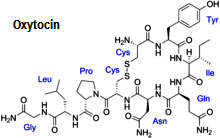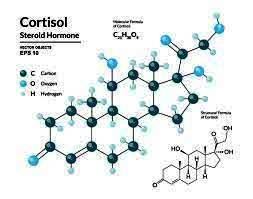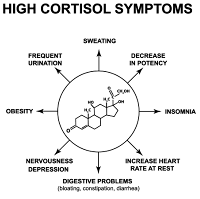Clinical Research and Clinical Case Reports
OPEN ACCESS | Volume 6 - Issue 2 - 2025
ISSN No: 2836-2667 | Journal DOI: 10.61148/2836-2667/CRCCR
Ven Sumedh Thero
Sumedh Bhoomi Buddha Vihar, Dr Ambedkar Park, Jhansipura, Lalitpur-284403 India.
*Corresponding authors: Ven Sumedh Thero, Sumedh Bhoomi Buddha Vihar, Dr Ambedkar Park, Jhansipura, Lalitpur -284403, India.
Received: April 21, 2022
Accepted: May 03, 2022
Published: May 05, 2022
Citation: Ven Sumedh Thero (2022). “Meditation is the only way to overcome Sleep Disorders and Psychiatry”. Clinical Research and Clinical Case Reports, 3(2); DOI: http;//doi.org/05.2022/1.1052.
Copyright: © 2022 Ven Sumedh Thero. This is an open access article distributed under the Creative Commons Attribution License, which permits unrestricted use, distribution, and reproduction in any medium, provided the original work is properly cited.
,
Here are the best positions for your body -- plus the one you may want to avoid. Good for: Preventing neck and back pain, reducing acid reflux, minimizing wrinkles, maintaining perky breasts. The scoop: Sleeping on your back makes it easy for your head, neck, and spine to maintain a neutral position



Links between personality and sleep position have been mentioned for decades. The most commonsleep positions include fetal, stomach, log, starfish (back with arms up), soldier (arms to the side on the back), and yearner (side with arms more or less straight out in front).
10 Benefits of Sleeping Naked You Probably Didn’t Know ;
Sleeping is one of the most important things we do every night. Getting the right amount of sleep has an untold number of health benefits and not getting enough sleep is a serious problem in many countries around the world. Did you know that you can get additional benefits by sleeping naked? Here are some benefits of sleeping in the nude:
1. It is easier.
When you don’t have to worry about sleeping in clothes, things start to get easier. You don’t have to buy pajamas, which can save you money. You have less clothes to wash and less clothes to put away. You may have to clean your bed sheets more often, but not nearly as often as you’d have to wash your pajamas when you run out.
2. It forces you to be ready to go more often. Some people get off of work, change into their pajamas, and use this as an excuse to stay home the rest of the evening. This can lead to a more sedentary lifestyle, which has been attributed to things like weight gain. When you keep your regular clothes on, you tend to go out more often and that’s a good thing.
3. It can make you feel happier and more free.
Just imagine the feeling of laying in bed naked. You’re free of your pants and underwear. Women, you’re not wearing a constrictive bra. It’s just you sandwiched between two cool sheets. The feeling just makes you want to smile and it makes you feel more free. Everyone can use that kind of good feeling every now and then, and it may even help you be happier as a person.
4. Skin-on-skin contact is the best.
If you’re married, or living with your significant other, sleeping naked gives a greater chance of skin-on-skin contact, especially when it comes to cuddling. This kind of contact can also lead to a more active sex life. All of this releases copious amounts of oxytocin, which is the neurotransmitter that helps you feel those good feelings about your significant other. Oxytocin is a hormone that acts on organs in the body (including the breast and uterus) and as a chemical messenger in the brain, controlling key aspects of the reproductive system, including childbirth and lactation, and aspects of human behaviour. It plays a role in social bonding, reproduction, childbirth, and the period after childbirth (Audunsdottir, 2022, Lengand G, Leng, 2021, Francis, et al 2002, Gainer, et al 2001). Oxytocin is released into the bloodstream as a hormone in response to sexual activity and during labour (Chiras, 2012). It is also available in pharmaceutical form. In either form, oxytocin stimulates uterine contractions to speed up the process of childbirth. In its natural form, it also plays a role in bonding with the baby and milk production. Oxytocin is typically remembered for the effect it has on prosocial behaviors, such as its role in facilitating trust and attachment between individuals (Grillon, et al 2013). However, oxytocin has a more complex role than solely enhancing prosocial behaviors. There is consensus that oxytocin modulates fear and anxiety; that is, it does not directly elicit fear or anxiety.



5. It could lead to better sleep.
Let’s revisit the scenario I described above. There are no drawstrings or clothes getting tangled in sheets. You don’t have to worry about shirts getting twisted. All of these distractions go away when you sleep naked and it may help you get better, deeper sleep. You don’t need science to tell you that better, deeper sleep only helps you be healthier.
6. It can help your skin.
For once your body gets to breathe. Your private parts, armpits, and feet are generally restricted all day and are often covered by multiple layers, even in the summer time. Give those parts a chance to air out and breathe. This can lower the risk of skin diseases, like athlete’s foot, that result from wet, restricted skin.



7. Helps you regulate your cortisol.
Cortisol is a very strange chemical in the body but it can do a lot of damage. When you sleep naked, it helps keep your body temperature at the optimal ranges so your body can better create cortisol. If you sleep overheated your cortisol levels tend to stay high, even after you wake up. This can lead to increased anxiety, cravings for bad food, weight gain, and more terrible things. Sleep naked so you can keep your body temperature down and sleep well so your body can properly produce and regulate cortisol.
8. Balances your melatonin and growth hormone.




Continuing along that same vein, keeping your sleeping environment below 70 degrees (F) every night can help your body regulate its melatonin and growth hormone levels. These chemicals help the body do things like prevent aging and are essential to good health. When you sleep in clothes, your body heats up and prevents effective use of these hormones. In other words, sleeping with clothes on makes you grow old faster. Melatonin is a hormone primarily released by the pineal gland at night, and has long been associated with control of the sleep–wake cycle. melatonin promotes the expression of antioxidant enzymes such as superoxide dismutase, glutathione peroxidase, glutathione reductase, and catalase (Sharafati, et al 2013).
9. It can keep your sex organs happier.
For men, the cooler sleeping conditions allows your testes to remain at a cooler temperature. This helps keep your sperm healthy and your reproductive systems functioning as normal. For women, the cooler and more airy sleeping conditions can actually help prevent yeast infections. Yeast grows better in warm, moist conditions. When it’s cooler and dryer, the growth of yeast is prevented.
10. Sleeping in the summer is more bearable.
Summertime is a tricky time to get good sleep. If you don’t have air conditioning, then you may find your bedroom a bit stuffy at night. Shedding those bedtime clothes can help the bedroom feel more comfortable. You may even be able to turn the A/C off on those cooler nights, which can save you a few bucks on your electricity bill. Don’t wake up drenched in sweat again because your thermostat is downstairs and the hot air expands up to your bedroom where the thermostat can’t read the warm temperatures.
With these tips in mind, it’s time to start taking off your clothes at night! Of course, there are times where clothes are preferable. If you are ill or it’s cold outside, then you should sleep with clothes on to help you stay warm and prevent further illness. Otherwise, go commando!
During pregnancy, babies are as close to their moms as they can be—getting warmth, food, protection, and oxygen from their mother’s body. Then, labor occurs and babies suddenly find themselves without immediate access to those essential needs. It is not surprising that study after study has shown a host of benefits for babies who experience skin-to-skin care (sometimes called ‘kangaroo care’) with their mothers. When babies are held naked against their mother’s skin, it is the closest they can get to being back in the warmth and security of the womb. Whenever possible, mothers and babies should be in direct contact for at least the first 1–2 hours after birth. In skin-to-skin care, the baby is naked (a dry cap is okay, as is a diaper), and is placed on the mother’s bare chest, between her breasts. A blanket should be draped over both of them for warmth. If the mother is unable to provide skin-to-skin care, due to labor or birth complications, then Dad can step in. Within minutes, you will see the benefits of skin-to-skin care become evident as both mother and baby relax. The baby’s body temperature, breathing, and heart rate stabilize.
Benefits of skin-to-skin care during infancy may persist for years. A long-term study of babies who were in the NICU (neonatal intensive care unit) of an Israeli medical center after birth found that benefits persisted years later. After assessing the children at 10 years of age, the researchers found benefits for those who had skin-to-skin care, including better maternal attachment behavior, reduced maternal anxiety, enhanced child cognitive development, and mother-child reciprocity. Given the short-term and long-term benefits, it’s not surprising that proponents of skin-to-skin care recommend the practice continue throughout the hospital stay and beyond.
Here are the 10 leading benefits of skin-to-skin care:
1. Improvement in heart and lung function.
Babies go through a dramatic transition after birth as they prepare to take their first breaths of air outside the uterus. Those held skin-to-skin by their mothers tend to adapt sooner than those who are not. They also tend to have heart and breathing rates that are both more normal and more stable. This benefit holds true with premature infants as well as those born full-term. Perhaps the mother’s heart sounds and breathing patterns are familiar to the baby after spending time in utero.
2. Stabilization of body temperature.
During pregnancy, a mother maintains her baby’s temperature by sweating when hot and shivering and moving around when cold. After birth, babies have yet to acquire that same ability, so they can’t adjust their own body temperature. In fact, when it comes to keeping a vulnerable newborn warm, a mother’s body is better than an artificial warmer. One study that compared a nursery warmer, skin-to-skin care provided by the mother, and skin-to-skin care provided by the father found that the mom’s and the dad’s bodies were better than an electric warmer, with a mother’s body having a slight edge over a father’s body.
3. Regulation of blood sugar.
Babies use blood sugar for energy. Before birth, they get glucose through the placenta; after birth, they get it from the mother. If your baby’s glucose needs (e.g., energy needed to stay warm) exceed what he can get from his mother’s milk or from his liver, he will experience low blood sugar. This can cause him to feed poorly, which can exacerbate the problem. The risk of low blood sugar is higher for babies born to mothers with gestational diabetes due to higher insulin levels in their blood. As the number of mothers who develop gestational diabetes in pregnancy grows the number of babies at risk for hypoglycemia (low blood sugar) also rises. Skin-to-skin care in the hours after birth can help stabilize your baby’s blood sugar levels.
4. Initiation of breastfeeding.
A fascinating video by the UNICEF shows a newborn baby making his way toward his mother’s breast and latching on right after birth. “Every newborn,” the organization explains, “when placed on her mother’s abdomen, soon after birth, has the ability to find her mother’s breast all on her own and to decide when to take the first breastfeed.” An alert baby’s natural instincts can help him locate, latch on, and breastfeed—providing he is in close contact with his mother. Even many infants in the NICU can receive their first oral feeding at the breast.
5. Transfer of good bacteria.
The role of vaginal birth versus cesarean birth in transferring good bacteria from a mother to her newborn can’t be overstated. Passage through the birth canal allows the baby’s gut to be colonized with the bacteria in the mother’s vagina. Another way that babies get exposed to their mother’s bacteria is through skin-to-skin contact after birth. Bacteria in the vagina and on the skin are different from bacteria found in a hospital isolette, so early exposure helps babies develop a range of healthy bacteria. Skin-to-skin contact also supports early breastfeeding. Some of the complex sugars in human milk are indigestible in the newborn, but are the perfect food for a subspecies of bacteria that coat intestinal wall, boost digestive function, and provide protection from harmful bacteria (pathogens). Experts believe this these good bacteria may protect against allergic disease. It may even help to decolonize infants in the NICU who have Staphylococcus aureus in their nostrils.
6. Reduction in crying.
Studies show that babies who are held skin-to-skin contact, particularly by their mother, are apt to cry less than those separated from their mothers. Some refer to a newborn’s cry as a “separation distress call,” noting that it is a mammalian reflex well-suited to calling the mother back to the young. During the newborn period, most babies cease crying once reunited with their mothers; thinking anthropologically about a baby’s cry, it seems understandable that a baby is less likely to cry when he feels the protection and security provided of his mother. Having the baby “room in” with the mother at the hospital can help ensure that she is able to respond to her baby’s needs and provide frequent skin-to-skin contact.
7. Relief from pain.
Studies of babies experiencing clinical procedures show that babies experience less pain when held skin-to-skin during (or even immediately following) the procedure and that the duration of the pain is shortened by the close contact. Skin-to-skin contact is also more beneficial than oral glucose (sugar water, a traditional solution) in relieving pain during a heel stick for blood sampling. Skin-to-skin care provides better relief of pain symptoms the longer the skin-to-skin care lasts. A comparison of 30 minutes of “kangaroo care,” 15 minutes of “kangaroo care,” and incubator care found the greatest relief from the longer amount of skin-to-skin contact. A study currently underway is looking at whether skin-to-skin care benefits continue over multiple routine painful procedures necessary in the NICU; researchers have stated that they believe it will be effective and their work will lead to changes in greater implementation of skin-to-skin care in clinical practice.
8. Enhancement of mom-baby communication.
The time after a baby’s birth provides an opportunity for parents to learn about their baby’s behavior—signs of hunger, signs of fullness, signs of discomfort, and so on. Having the baby in close skin-to-skin contact helps to ensure that the mother will learn her baby’s signals sooner, improving communication and boosting maternal confidence as well as helping babies develop a sense of trust and security.
9. Easy transition from the womb.
Babies who are held skin-to-skin are more stable, physiologically, than their peers who are placed in a warmer after birth. They also demonstrate better neurobehavioral outcomes, as indicated by many of the factors that have been noted, including less crying, lower pain response, and better breastfeeding. In short, these babies experience less stress following birth as they begin to navigate the new world around them. Ruth Feldman, a professor of psychology and neuroscience at a university in Tel Aviv, notes that close contact in the days after birth is not an option but a need—for all mammals, not just human babies. “Every mammal,” she explains, “has to be cuddled and in close proximity with its mother in the first days and weeks of life.”
10. Boost in maternal-child bonding.
The traditional (albeit outdated) medical model for birth has encouraged mothers to put their newborn babies in warmers, and to have them transported to the nursery for monitoring by nursing staff while the mother rests in her room. Thankfully, this model is being replaced and mothers and babies are staying together from birth throughout the postpartum hospitalization, unless there is medical condition that requires separation. When mothers and babies are separated after birth there are few opportunities to get to know each other. Touch is essential for mammalian survival, and skin-to-skin contact enables mothers and babies to use all of their senses in nurturing this new and vital relationship. While most of the early research on skin-to-skin care focused on benefits of skin-to-skin care during the first hour or two after birth (sometimes called the “magical hour”), more recent studies show that skin-to-skin care boosts health well beyond the newborn’s first days. Hold your baby close from the start, and continue to keep her close throughout infancy. The power of touch is good for your baby—and good for you too.